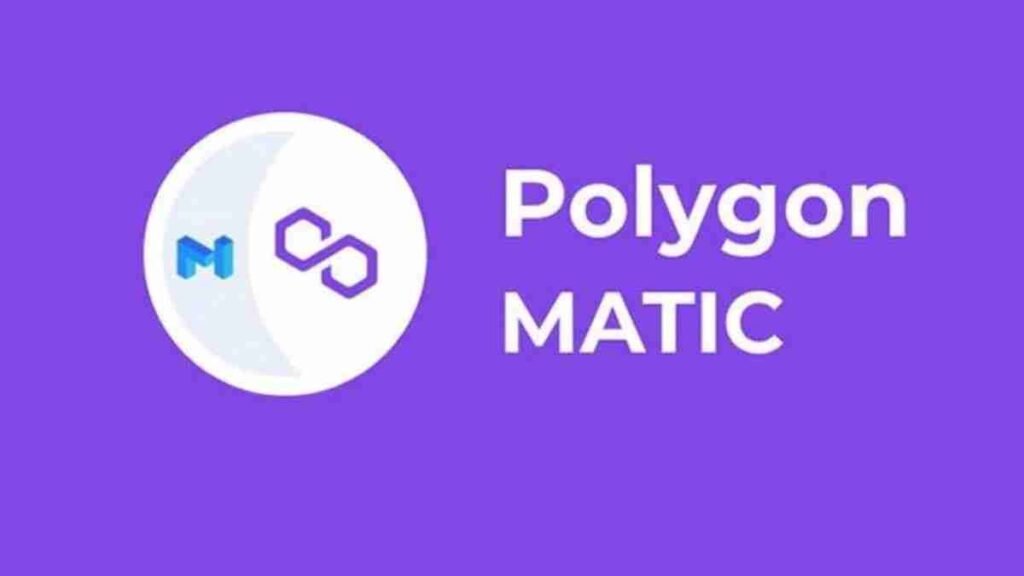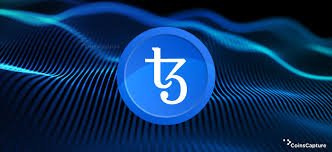What is Polygon (MATIC)?
Table of Contents
Explore Polygon (MATIC), the Ethereum scaling solution boosting blockchain performance and efficiency.
If you’ve been navigating the crypto space, you’ve probably heard of Polygon (MATIC). But what exactly is it? Polygon is a Layer 2 scaling solution for Ethereum, designed to make transactions faster, cheaper, and more efficient while preserving the security of the Ethereum network. It’s a powerful tool in the crypto world, aiming to solve Ethereum’s biggest challenge: scalability. Let’s dive into its story, history, advantages, and much more!
The Story of Polygon (MATIC)
Polygon wasn’t always known by this name—it started as Matic Network. Founded in 2017 by three visionaries from India, Sandeep Nailwal, Jaynti Kanani, and Anurag Arjun, the project aimed to solve Ethereum’s scaling issues. Ethereum, while incredibly popular, has struggled with high gas fees and slow transaction times. That’s where Polygon steps in. Polygon rebranded from Matic Network in February 2021, marking a significant step forward in its evolution. With the rebranding came a broader vision to create an entire multi-chain ecosystem for Ethereum.
Origins of Polygon
The origin story of Polygon begins with Ethereum’s success and struggles. While Ethereum is celebrated for its decentralized apps (dApps), DeFi (decentralized finance), and NFT platforms, its ability to scale has been a bottleneck. Polygon’s founders envisioned a way to enhance Ethereum’s scalability while making it accessible to developers and users alike.
Evolution Over Time
Since its inception, Polygon has evolved into one of the most prominent scaling solutions in the crypto space. It expanded its mission to support multiple blockchain infrastructures, creating an “internet of blockchains” where different networks could interact seamlessly.

History Behind Polygon (MATIC)
Polygon’s rise to prominence can be traced back to its innovative approach to scaling and its supportive community. The founders, particularly Sandeep Nailwal and Jaynti Kanani, envisioned a world where Ethereum could scale without sacrificing its decentralization or security. From humble beginnings, Polygon grew rapidly, securing partnerships with some of the biggest players in the crypto space, including Aave, Chainlink, and OpenSea.
Founders and Vision
The driving force behind Polygon is its founding team’s vision of solving Ethereum’s scalability issues. With a focus on making blockchain technology more accessible and efficient, they positioned Polygon as a key player in the Ethereum ecosystem.
Major Milestones in Polygon’s Development
Polygon has achieved several key milestones, such as launching the Polygon SDK, allowing developers to create customizable and scalable dApps. Additionally, the rebranding from Matic Network to Polygon marked a significant shift, expanding its capabilities beyond just Layer 2 solutions.
The Advantages of Polygon (MATIC)
Polygon offers numerous advantages that set it apart from other solutions in the space. These advantages include:
Scalability Solutions
Polygon provides faster and more scalable transactions compared to Ethereum’s base layer. This makes it ideal for dApps, DeFi platforms, and NFT marketplaces. It also addresses congestion issues on the Ethereum network.
Low Transaction Fees
One of Polygon’s biggest selling points is its incredibly low transaction fees. For users tired of paying sky-high gas fees on Ethereum, Polygon offers an affordable alternative, while still benefiting from Ethereum’s security.
High Security
Despite being a Layer 2 solution, Polygon doesn’t compromise on security. It benefits from Ethereum’s robust security while adding its own layer of protection through plasma chains and proof-of-stake consensus mechanisms.
How Does Polygon Work?
At its core, Polygon operates as a Layer 2 solution for Ethereum, but it’s more than that. It uses various scaling techniques to improve transaction throughput and reduce costs, all while maintaining security.
The Architecture of Polygon
Polygon’s architecture includes the use of sidechains, rollups, and proof-of-stake (PoS) validators to ensure fast, secure, and low-cost transactions. Its modular design allows developers to customize the solution to fit their needs.
Layer 2 Solutions and Rollups
One of the most talked-about features of Polygon is its use of Layer 2 solutions like rollups, which batch transactions together before committing them to the Ethereum mainnet. This reduces the load on Ethereum while speeding up transactions.
Market and Role of Polygon (MATIC)
In the broader cryptocurrency market, Polygon has carved out a significant role. It has become a go-to solution for developers and projects looking to scale on Ethereum without the prohibitive costs.
Position in the Crypto Market
Polygon has steadily climbed the ranks to become one of the top cryptocurrencies by market capitalization. It’s widely used in DeFi protocols and NFT marketplaces, proving its value in the ecosystem.
Impact on DeFi and NFTs
Polygon’s impact on DeFi and NFTs is undeniable. It has enabled more affordable transactions for users, making platforms like OpenSea and Aave more accessible to a wider audience. Its presence in these sectors is growing daily.
Partnerships and Collaborations
One of Polygon’s strengths is its ability to form strategic partnerships. From Google Cloud to Reddit, Polygon has secured deals that expand its reach and influence in the blockchain space. These collaborations have solidified its role as a leading Layer 2 solution.

Polygon (MATIC) vs Other Layer 2 Solutions
In the crowded space of Layer 2 solutions, how does Polygon stack up? Let’s break down how it compares to other popular networks.
Comparison with Ethereum
While Ethereum struggles with high gas fees and slower transaction times, Polygon offers a faster, cheaper alternative. However, Polygon leverages Ethereum’s security, giving users the best of both worlds.
Comparison with Solana and Avalanche
Compared to Solana and Avalanche, Polygon focuses on being an Ethereum scaling solution. While Solana and Avalanche aim to build independent blockchain networks, Polygon’s strength lies in its support for Ethereum-based projects.
The Future of Polygon (MATIC)
Looking ahead, Polygon’s future is bright. With an ever-expanding ecosystem and continuous development, the project shows no signs of slowing down.
Roadmap and Upcoming Features
Polygon’s roadmap includes several exciting updates, such as zk-rollups for even greater scalability and further improvements to its SDK. These updates are expected to make Polygon even more efficient and versatile.
Long-term Potential and Vision
The long-term vision for Polygon is to continue being the leading Layer 2 solution for Ethereum while expanding its capabilities to support more use cases in the blockchain space. It’s poised to play a critical role in the future of decentralized finance and Web3 technologies.
Conclusion
Polygon (MATIC) is not just another Layer 2 scaling solution—it’s a comprehensive ecosystem that enhances Ethereum’s capabilities while reducing its pain points. From faster transactions and lower fees to robust security and partnerships with industry giants, Polygon has positioned itself as a key player in the world of blockchain technology. As the project continues to grow and evolve, it will be exciting to see how it shapes the future of decentralized applications, DeFi, and NFTs.
FAQs About Polygon (MATIC)
What is Polygon (MATIC)?
Polygon (MATIC) is a Layer-2 scaling solution for Ethereum that enhances the blockchain’s performance by improving transaction speed and lowering fees.
How does Polygon improve Ethereum’s scalability?
Polygon uses sidechains to process transactions off the main Ethereum blockchain, reducing congestion and increasing speed while keeping costs low.
What is MATIC used for?
MATIC is Polygon’s native cryptocurrency, used for transaction fees, staking, and governance within the network.
How is Polygon different from Ethereum?
While Ethereum is a Layer-1 blockchain with scalability limitations, Polygon operates as a Layer-2 solution, providing faster and cheaper transactions while maintaining Ethereum’s security.
Is Polygon (MATIC) secure?
Yes, Polygon’s security is enhanced by Ethereum’s robust security infrastructure and its own Proof-of-Stake (PoS) consensus mechanism.
Can I stake MATIC tokens?
Yes, users can stake MATIC tokens to help secure the network and earn staking rewards in return.
What are the benefits of using Polygon for developers?
Polygon offers developers a scalable and efficient platform to build decentralized applications (dApps) with faster transactions, lower fees, and Ethereum compatibility.
How is MATIC different from other Layer-2 solutions?
Polygon stands out by offering a flexible framework that supports multiple scaling solutions, including zk-Rollups and Optimistic Rollups, tailored to specific use cases.
Where can I buy Polygon (MATIC)?
MATIC is available on most major cryptocurrency exchanges such as Binance, Coinbase, and Kraken.
What is the future of Polygon (MATIC)?
Polygon aims to continue expanding its ecosystem by integrating more Layer-2 solutions, improving scalability, and supporting Ethereum’s transition to a Proof-of-Stake (PoS) model.
What is a Layer-2 solution in blockchain?
A Layer-2 solution refers to protocols built on top of a blockchain (Layer-1) to improve scalability and efficiency without compromising security. Polygon is an example of such a solution for Ethereum.
How does Polygon reduce gas fees?
By processing transactions on sidechains and offloading them from the main Ethereum network, Polygon significantly reduces gas fees compared to transacting directly on Ethereum.
Can Polygon support NFTs and DeFi?
Yes, Polygon supports a wide range of decentralized finance (DeFi) applications and non-fungible tokens (NFTs) by offering fast and low-cost transactions, making it an attractive platform for developers and users alike.
How does Polygon maintain decentralization?
Polygon employs a Proof-of-Stake (PoS) consensus mechanism, ensuring decentralization by allowing validators to secure the network and participate in governance.
Does Polygon have partnerships with other blockchain projects?
Yes, Polygon has formed partnerships with various blockchain projects and platforms, such as Aave, SushiSwap, and Decentraland, to expand its ecosystem and offer seamless integration with Ethereum-based applications.
How can I integrate my dApp with Polygon?
Developers can easily integrate their dApps with Polygon using the existing Ethereum toolset, such as Solidity and the Ethereum Virtual Machine (EVM), making the transition smooth and efficient.
Is Polygon environmentally friendly?
Polygon’s Proof-of-Stake (PoS) consensus mechanism is far more energy-efficient compared to Ethereum’s previous Proof-of-Work (PoW) model, making it a more environmentally friendly option for blockchain transactions.
How does Polygon handle network congestion?
By processing transactions on sidechains, Polygon alleviates congestion on the Ethereum network, ensuring faster transaction times and reduced bottlenecks during high-traffic periods.
What wallets support MATIC?
Popular wallets like MetaMask, Trust Wallet, Ledger, and Trezor support MATIC, allowing users to store, send, and stake their tokens securely.
How can I track the price of Polygon (MATIC)?
The price of MATIC can be tracked on cryptocurrency market tracking websites and apps like CoinMarketCap, CoinGecko, or directly on cryptocurrency exchanges where it is listed.
This structured approach ensures that readers can easily navigate through the article while gaining comprehensive insights into Polygon (MATIC). If you need any changes or additions, feel free to ask!
For More Information, Visit https://coinfxnews.com/




